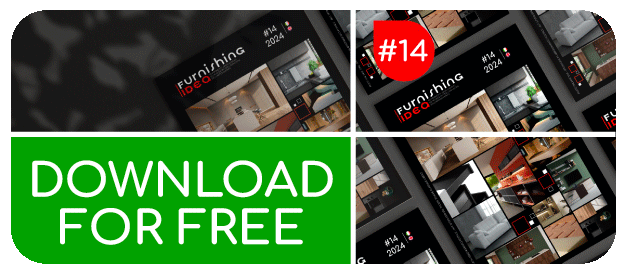
- 29/11/2024
- Fairs
To know the data, the dimensions and the dynamics of this great international event that makes Milan the capital of design, and to draw from it guiding strategies for the future: this is the objective of the Report (Eco) Sistema Design Milano, conceived and promoted by Salone del Mobile.Milano, with the scientific supervision of the Politecnico of Milan, and presented on November 28th at the Piccolo Teatro in Milan.
37 data holders, 86 sources, 10 working tables with 130 stakeholders, 530 field observations: these are just some of the figures that summarize the research activities that went into this first important project.

From left: Christian Rocca, Editorial Director of Linkiesta, Maria Porro, President of Salone del Mobile.Milano, Stefano Maffei, Full Professor of Design - Politecnico di Milano, and Francesco Zurlo, Full Professor of Industrial Design and Dean of the School of Design, Politecnico di Milano. ©Andrea Mariani
A complex and dynamic ecosystem
The Milano Design System is configured as a complex and dynamic ecosystem, whose protagonists are, on the one hand, the Salone del Mobile.Milano, which has once again confirmed its role as an international catalyst this year with a record number of 370,824 admissions, 65.6% of which came from abroad, and, on the other hand, Milan Design Week, with its network of events scattered throughout the city, as many as 1,326 in the last edition.
The ecosystem historically includes Milan, which from 2009 to 2023 has seen a 66 percent increase in the number of companies and professionals in the Design Core, a sector that has design as its primary activity: 2,275 to date. Interestingly, 12 percent of them are run by young people, 13.7 percent by foreigners and 27.2 percent by women (higher than the European average of 24 percent).
Prototype of the first permanent Observatory
Divided into 8 chapters, more than 260 pages and more than 90 graphics, the report proposes, in prototype form, the structure that will guide the birth of the first permanent Observatory dedicated to a unique event in the world.
The analysis begins with an account of the evolution of the Salone "model", sharing the performance indicators of the 2024 edition. It also provides data and interpretations on the Design Week, analyzed through 260 surveys and 530 field observations.
This is followed by the results of the survey on the impact generated by the event, taking into account 7 macro themes, including visitor flows, digital spending and circularity.

Lectio Magistralis by Charles Landry, urban essayist and sociologist ©Andrea Mariani
Maintaining the attractiveness of the event
This first edition of the report, which was shared with the City of Milan and the Lombardy Region, saw the collaboration of the relevant municipal and regional departments, a large number of trade and professional associations, and study and research centers.
Maria Porro, President of the Salone del Mobile.Milano, after thanking those who have welcomed and supported the project, said: "The aim of this report is to share data and interpretations at the service of all citizens, to inform with greater awareness the strategies that must guide the future, already from today. The results of this research provide a first physiognomy of a vital ecosystem that, in its complementarity and synergy with the territory, distinguishes what happens every April in Milan from what happens in other fairs and design weeks around the world. The main challenge that the city has to face, in all its manifestations, is to maintain the event's attractiveness, to keep the quality of the offer high and, at the same time, to resolve those latent criticalities that characterize events of this magnitude". He then concluded: "Our ecosystem, in order to look to the future, must maintain its own balance, with a sharing of objectives between public and private actors, and a strategy of 'if, yes' instead of 'no, why', as suggested by sociologist Charles Landry, among the leading international experts on creative cities, to whom we entrusted the opening of the presentation session of the report, a tool created to be made available to all city decision-makers, with whom we want to reflect and act together to better inform tomorrow".


 en
en  Italian
Italian French
French German
German Spanish
Spanish Portuguese
Portuguese








